Foraging wild food requires practice, knowledge, and experience on your landscape. Notice I used the word your land. What you’ve read in books and watched on YouTube may not apply to your locale. While survival principles may never change, self-reliance is local.
Many of us are self-taught in skills of wilderness living. However, one way to shorten your learning curve is to find an experienced skills practitioner in your area who is actually Doing the Stuff. After receiving instruction, you gain knowledge. Knowledge weighs nothing but is not enough. You make knowledge applicable through time and experience and context. There is no substitute for time in your woods.
Trees of Southern Appalachia
Unlike most plants, trees stand ready to share their resources year-round.
Winter tree identification would not be challenging if trees would stop dropping their leaves. Mark taught winter botany lessons which I had never been exposed to. Sharing all I learned would take several articles. For our purposes today, we will explore 3 of my favorite trees in my woods and how the Cherokee and settlers used them for food, medicine, and craft resources.
Tulip Tree
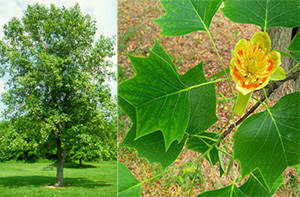 Tulip Poplar (Liriodendron tulipifera) it is not a poplar at all. It is actually in the Magnolia ((Magnoliaceae)) family of flowering trees. There are many common names for Liriodendron tulipifera besides Tulip Poplar… Yellow Poplar, Canoe Wood, Yellow Wood, and Tulip Tree. That is one reason it is important to use scientific names of plants and trees… if you can manage to pronounce them. This will remove any confusion over common names.
Tulip Poplar (Liriodendron tulipifera) it is not a poplar at all. It is actually in the Magnolia ((Magnoliaceae)) family of flowering trees. There are many common names for Liriodendron tulipifera besides Tulip Poplar… Yellow Poplar, Canoe Wood, Yellow Wood, and Tulip Tree. That is one reason it is important to use scientific names of plants and trees… if you can manage to pronounce them. This will remove any confusion over common names.
Food
The Tulip Tree, while not a nutritional powerhouse, is a favorite of mine mainly for craft and outdoor self-reliance. Tulip Tree blooms are a main source of nectar for honey bees which produces a dark, amber honey loaded with antioxidants.
- The only part of a Tulip Tree that I know is edible is the nectar in the flowering blooms.
- Edit: Darryl Patton, The Southern Herbalist, sent me a message saying he collects, dries, and pounds the inner bark into flour for baking in his spring classes. Thank you, Darryl.
Medicine
Tulip Tree’s inner bark and leaves were used medicinally by the Cherokee and settlers in Appalachia for treating…
- Poultice from leaves for inflammation and sores.
- Inner bark tea for periodic fevers, diarrhea, pinworms, as a digestive aid and for rheumatic pain.
- Supposedly, inner bark was chewed as an aphrodisiac.
- The bark could also serve as a substitute for quinine in treating malaria.
- Tooth aches. (Read more: Dental Care after SHTF)
- Used as a tonic to induce perspiration to treat fevers.
- Root bark and seeds useful as a wormer for the body.
- Cough syrup from bark. Here you can find another method for making your own cough syrup.
Craft
- Fire Craft ~ Wood for friction fire, inner bark for tinder, hot, quick burning firewood which does not produce long-lasting coals like other hardwoods.
- Cordage ~ Inner bark fibers can be processed into cordage and rope.
- Indigenous cordage:

Clockwise from 12:00 ~ Dogbane; Tulip Tree; Okra, and Yucca. - Containers ~ Outer bark crafted into berry baskets, arrow quivers, and larger pack baskets.
- Carving ~ The soft hardwood lends itself to easy carving of spoons, bowls, pottery paddles, canoe paddles, and even the canoe itself. One common name of this tree is Canoe Wood.

This design will be carved into the Tulip Tree and used to imprint designs on primitive process pottery. - Insulation ~ Shredded inner bark can be stuffed between layers of clothing to create dead air space to retain body heat in a survival situation.
- Roofing/Siding ~ Outer bark slabs used for shingles and siding on shelters.
Hickory
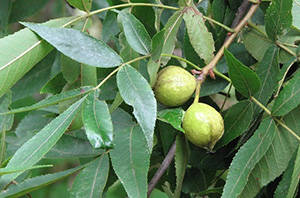 Hickories make excellent wildlife resource as squirrels and feral pigs love to eat their nut meat. Pignut (Carya glabra), Mockernut (Carya tomentosa), and Shagbark (Carya ovata) are the three hickories I’m most familiar with in Georgia, Mockernut being the most common.
Hickories make excellent wildlife resource as squirrels and feral pigs love to eat their nut meat. Pignut (Carya glabra), Mockernut (Carya tomentosa), and Shagbark (Carya ovata) are the three hickories I’m most familiar with in Georgia, Mockernut being the most common.
Food
- Sap ~ Sap water from hickories can be consumed without treatment. Read more: 4 More Trees That Can Be Tapped For Sap And Syrup
- Nuts ~ Contains fats (18g/serving), protein (3.6g/serving), and carbohydrates (5 g/serving) – Serving size = 1 oz.
- Hickory syrup from crushed and processed nuts.
- Cooking oil from nuts.
- Kunuche (ku-nu-che) ~ A traditional Cherokee hickory nut soup.
- Nuts with exterior husks are useful as charcoal for cooking food.

Scott Jones (Media Prehistoria) using hickory nuts as charcoal. - Hickory Milk ~ “They pound them to pieces, and then cast them into boiling water, which, after passing through fine strainers, preserves the most oily part of the liquid; this they call by a name which signifies hiccory milk; it is as sweet and rich as fresh cream, and is an ingredient in most of their cookery, especially homony and corn cakes.”
Medicine
- Infusion of boiled bark for arthritis pain.
- Inhaling fumes of young shoots on hot rocks as a treatment for convulsions.
- Cold remedy
- Liver aid
- Gynecological aid
- Dermatological issues
Craft
Hickory was used by the Cherokee’s for…
- Stickball sticks
- Crafting bows
- Handles
- Firewood
- Smoking meats
- Furniture
- Inner bark of Mockernut and Shellbark Hickory used to finish baskets
- Ashes from hickory were used by settlers to make quality lye for soap.
- Inner bark used for cordage. Mark described a method of slicing down a hickory limb to remove the bark and twisting it to make a strong rope. I’ll explore that method in a later post.
- Green nut husks used as dye
- Nut oil mixed with bear fat as an insect repellent.
Pine
There are 36 pines in North America to choose from. These evergreens are easy to spot for anyone. To narrow down the species, count the needles. The Eastern White Pine (Pinus strobus) is the only species in Eastern North America with 5 needles in the fascicle sheath (the paper-like sheath surrounding the base of the needles).
Hemlock is a part of the pine family and grows in southern Appalachia. Like other pines in our region, the inner bark is edible.
Food
- Pine nuts are edible and tasty.
- Inner bark was eaten when other foods were scarce. Should be boiled/cooked since it is high in turpenes. Can also be dried and ground into a flour.
- Pine pollen can be collected and is edible and used like flour.
- Long strips of inner bark can be boiled to make pine noodles.
Medicine
 Pine needle tea has the following medicinal properties: antiseptic, astringent, inflammatory, antioxidant, expectorant, high in Vitamin C for colds – flu – coughs, congestion, and even scurvy.
Pine needle tea has the following medicinal properties: antiseptic, astringent, inflammatory, antioxidant, expectorant, high in Vitamin C for colds – flu – coughs, congestion, and even scurvy.- Shikimic acid, the main ingredient in Tamiflu, is harvested from pine needles in Asia.
- Pine resin applied to skin conditions.
- Warm poultice of pine resin will draw splinters and foreign matter from skin.
- The inner bark can be fashioned as an antiseptic Band Aid for cuts and scraps
- Chew softer sap straight off the tree like a gum for sore throats and colds. You could pre-make “gum” with these ingredients: bees-wax, pine sap, and honey.
Craft
- Pine sap/resin
- Fire Craft ~ My favorite fire starter. Resin-rich fat lighter produces a chemical burn for fire lighting.
- Wood for shelters and bows for bedding.
- Rescue Signals ~ A pre-made signal fire built with green pine boughs on top will generate enough white smoke to be seen for miles.
- Pine needles were used to make baskets and resin was used as a sealer.
- Logs were used in home building.
- White pine and hemlock are both good wood for friction fire.
- Dried and ground hemlock inner bark used as flour.
- Dried pine “flour” is useful when rubbed on the body to cover human scent while hunting.
Cherokees called trees “The Standing People.” Trees do not walk to new locations like animals in search of food. They are always in the same spot. Learning to identify trees and their resources will put you in a better position of appreciation and stewardship of your natural environment.
To mention all the trees used by the Cherokee would be better addressed in book form. In this article, we’ve highlighted three of my favorite trees in our woodlands.
This article was written by Todd and first appeared on Survival Sherpa.
You may also like:
 Burdock: The Annoying Weed That Can Save Your Life
Burdock: The Annoying Weed That Can Save Your Life
SHTF Antibiotics – A True Story (Video)
This Common Driveway Weed is One of Nature’s Most Powerful Survival Plants
How to Use Acorns as Survival Food

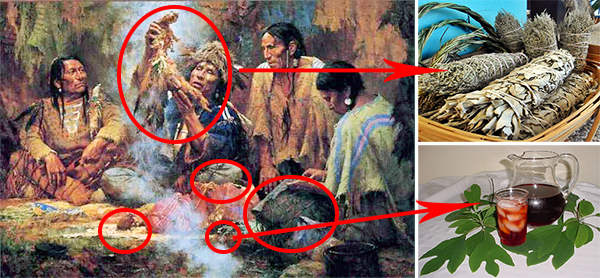
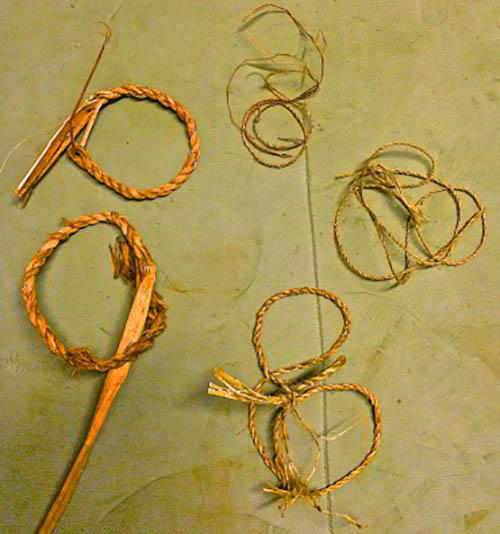
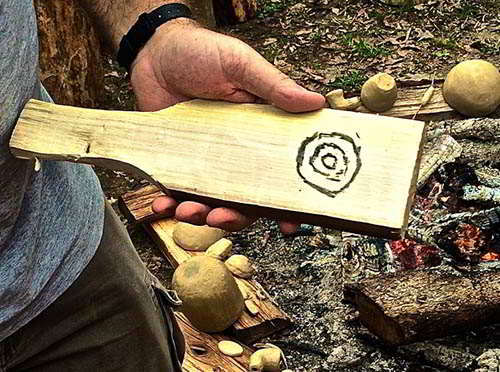

 Pine needle tea has the following medicinal properties: antiseptic, astringent, inflammatory, antioxidant, expectorant, high in Vitamin C for colds – flu – coughs, congestion, and even scurvy.
Pine needle tea has the following medicinal properties: antiseptic, astringent, inflammatory, antioxidant, expectorant, high in Vitamin C for colds – flu – coughs, congestion, and even scurvy.









Interesting article. I hope you write a book on the different trees and the uses for them.
I have these trees in the woods next to my house. I try to learn everything i can about trees. Tell me more so I can learn more.
All of this is worth having. If things go the way some say that they will, and I do agree things are going to get bad, then those who know such things will be the wealthy. Knowledge and experience is worth a lot more than money that can’t buy anything. All of that said, there is something that people need to know. There is a push for electricity generation, and I now have a knowledge point that people need to know. Batteries, and solar cells and generators and such as this are great, so long as they have what they need to operate. What happens when the fuel runs out, or there is no sunlight for days? Yes, there are alternatives. Gas engines, those can run on methane, that is, natural gas, which is dead easy to make. Mother Earth News had a series on this. Get the CD’s for the first 20 years of publication. Diesels, they will run on just about any oil you can get for them, or make Bio-diesel. Home Power magazine had an article on that several years ago. Get a reprint of it. Don’t trust computers to be able to replay what you store on them, print it. Do, however, get one, keep it active, but stored in a steel water tight box. Computer, and a couple of monitors. The crown jewel of what I desire to share is Thermo-electric Generators, or TEG’s. This device when heated to about 150 degrees C, and the other side kept cool, does produce electricity. Tea kettles are being sold with a device in them, that will charge a cell phone. The device is a TEG. Lowes and stores like them, and I’ll guess sporting goods stores carry a device that holds either charcoal of wood, so that you can heat your water for coffee, tea, prepare a meal on it, and, again, charge your cell phone. Is this all? Not at all. The cells are available to buy by anyone. Look them up on Amazon,or eBay. They are no worse in price than a solar cell by itself. There are articles on line that tell how to use them. I have 10 of them that will produce 12 volts DC and provide 60 watts of DC power. What do these cells require for their operation, heat. Dead of night, major storm blowing, or what ever prevents the other means from being used, heat the hot side, the cells are marked for that, and cool the other side, and you get the watts for your needs. That, in the long run, makes them better than anything else, in my opinion.
Article très intéresssant, j’espère qu’un jour vous écrirez un article sur les arbres européens
Hi there, I have lived in the Appalachian Mts. for better than 60 years. I would like to comment on this article. Interesting but go in to more detail about the pine nuts? How do you get them from the cone and which variety are eatable. I have eaten the gray squirrels that were “cutting” on the Black pines. Also I have the Hemlock is a source of poison! I was told the Hemlock Society used the tree to end their life. So be careful what you consume of this tree.
Socrates was executed by making him drink hemlock tea.
I was delighted to see the information on the Tuip Tree, as I have a large one growing right outside my house! I also have three HUGE white pines, probably 7580 years old. Now, I just need to learn how to harvest inner bark! Great article, thanks!
THat should be 75 to 980 years old, lol!
Unfortunately the chestnut trees that comprised 25% of the southern forests have disappeared. The nuts provided food for much of the wildlife. The wood was straight grained and resisted rot so it was used to make split rail fences that endured. University of Tennessee agriculture is trying to create a blight resistant chestnut tree with some success.
Black walnuts are prolific in the southern forests and provide walnuts as food and also used as a dye. Probably the origin of the term “tough nut to crack” as they are hard to get at the nut meat. Without gloves it will stain your hands almost indelibly.
The sassafras tree root can be dug up and dried. Small chunks placed in a pan of boing water will make a delicious tea. Each fall a “tinker man” would come through and sell small bundles to my mother and she would make this tea for us to drink at dinner.
Also the young soft tips of the sassafras tree can be snipped off and chewed. The stem makes an emergency toothbrush to rub over and between the teeth to clean and freshen the mouth. Spit out the pulp and rise with water if you have it.
The persimmon tree produces a meaty fruit that is edible. It needs a good frost and ripening before eating. If they are green and not mellow/ripe your mouth will pucker like biting into a lemon. Do not eat the seeds. Be careful in picking fallen fruit from from the ground because racoons and possum like them too and could contaminate them. I have never tried to cook or boil them.
A’Ho! The ways of my people! ???